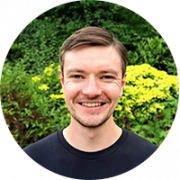
Luke Brown
Luke joined the University of Salford in October 2022, having previously worked at the University of Southampton as a Senior Research Fellow (2021-2022), Senior Research Assistant (2018-2021), and Research Technician (2017-2018), whilst also completing a part-time PhD in Remote Sensing (2015-2021). Prior to this, he undertook an MSc in Applied Geographic Information Systems and Remote Sensing (2014-2015) and a BSc (Hons) in Geography (2011-2014).
Luke’s research focuses on i) the use of optical remote sensing to retrieve vegetation biophysical & biochemical properties (enabling vegetation health to be quantified from the air and from space), and ii) the validation of these retrievals using in situ measurement techniques (to ensure they can provide accurate inputs to models of crop yield, carbon exchange, and the weather and climate systems). Previous research projects Luke has been involved in include:
Ground Reference Observations Underlying Novel Decametric Vegetation Data Products from Earth Observation (GROUNDED EO) aims to exploit cutting-edge machine learning approaches, ground data collection capabilities, and data fusion methods to develop improved decametric vegetation biophysical products from Sentinel-2 and -3, ultimately facilitating better environmental decision making.
The objectives of the project are to:
3. Leverage synergetic potential with Sentinel-3 to derive synthetic Sentinel-2 data, upon which the improved biophysical processor will be applied, filling gaps in the original Sentinel-2 time series (e.g. due to cloud cover). Biophysical variable retrievals from the synthetic data will be validated using ground reference observations that didn’t match the original Sentinel-2 observations.
Methods in Ecology and Evolution (2025)
Ecological Informatics (2024)
Remote Sensing (2024)
Remote Sensing (2024)
Not just a pretty picture: Mapping Leaf Area Index at 10 m resolution using Sentinel-2
Remote Sensing of Environment (2024)
SoftwareX (2024)